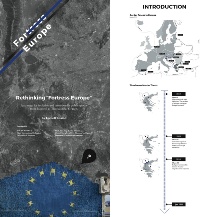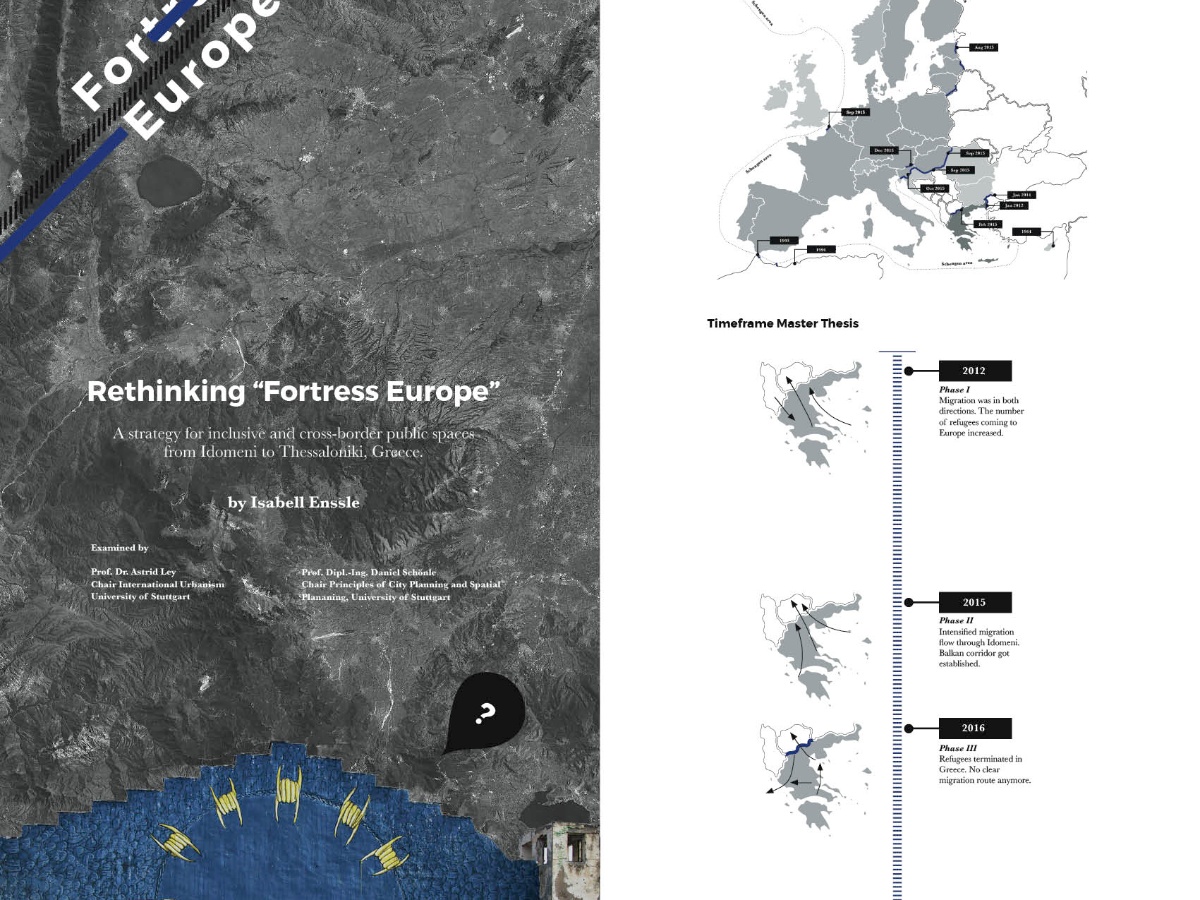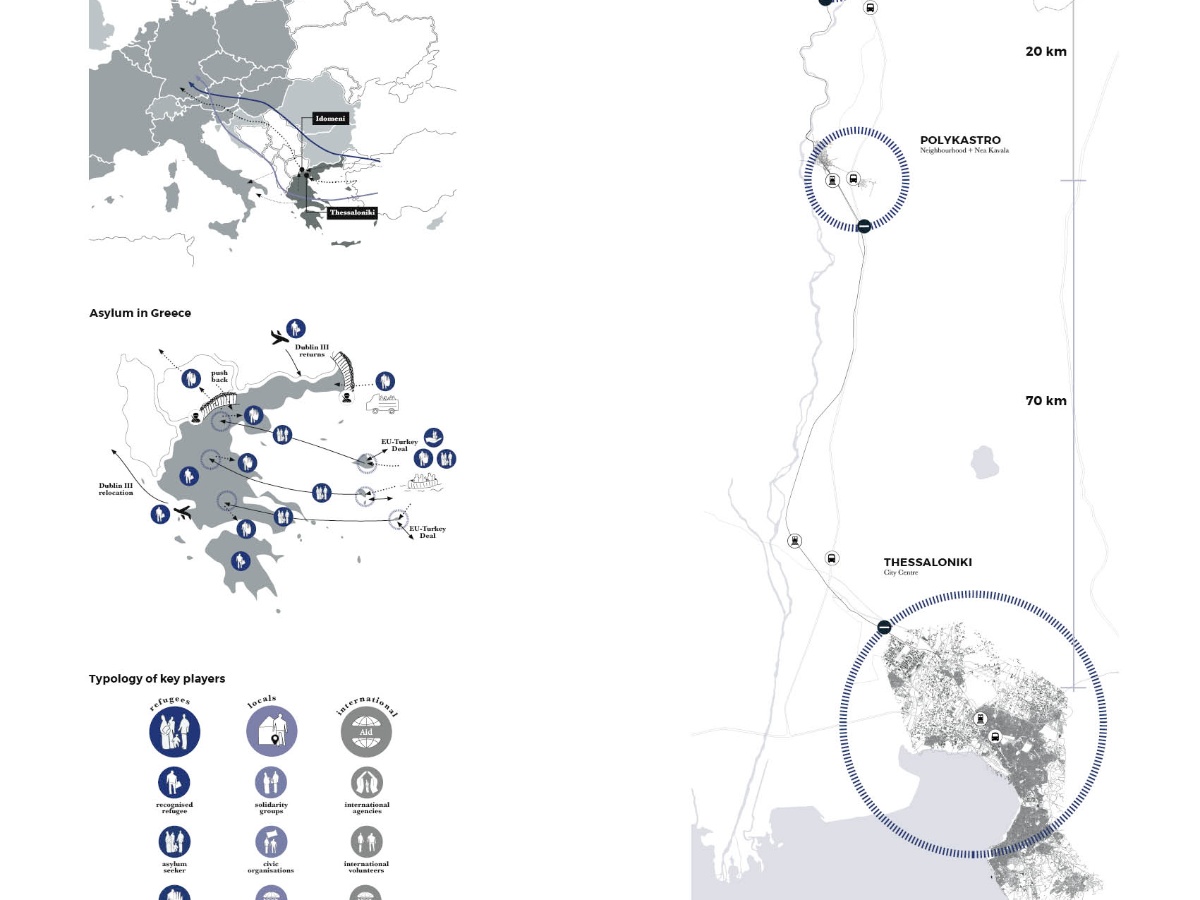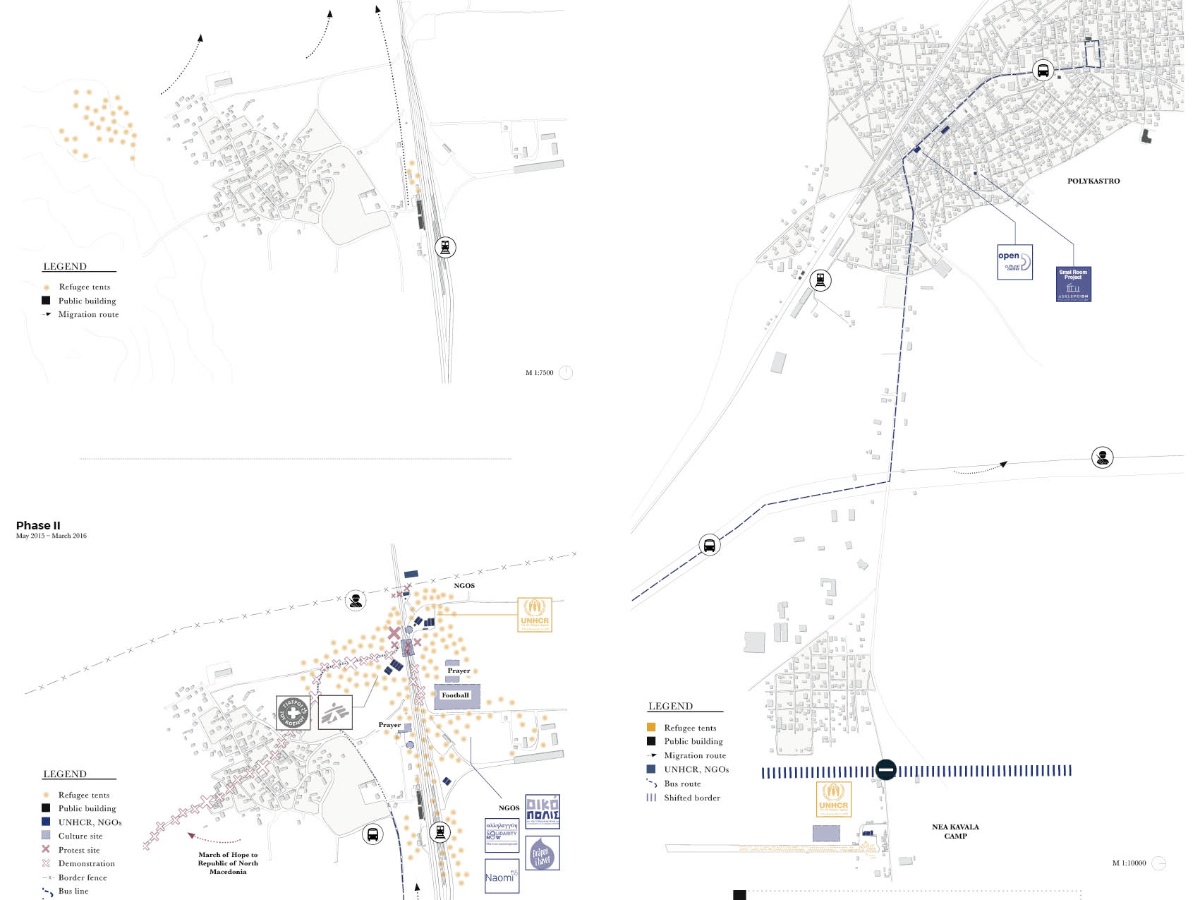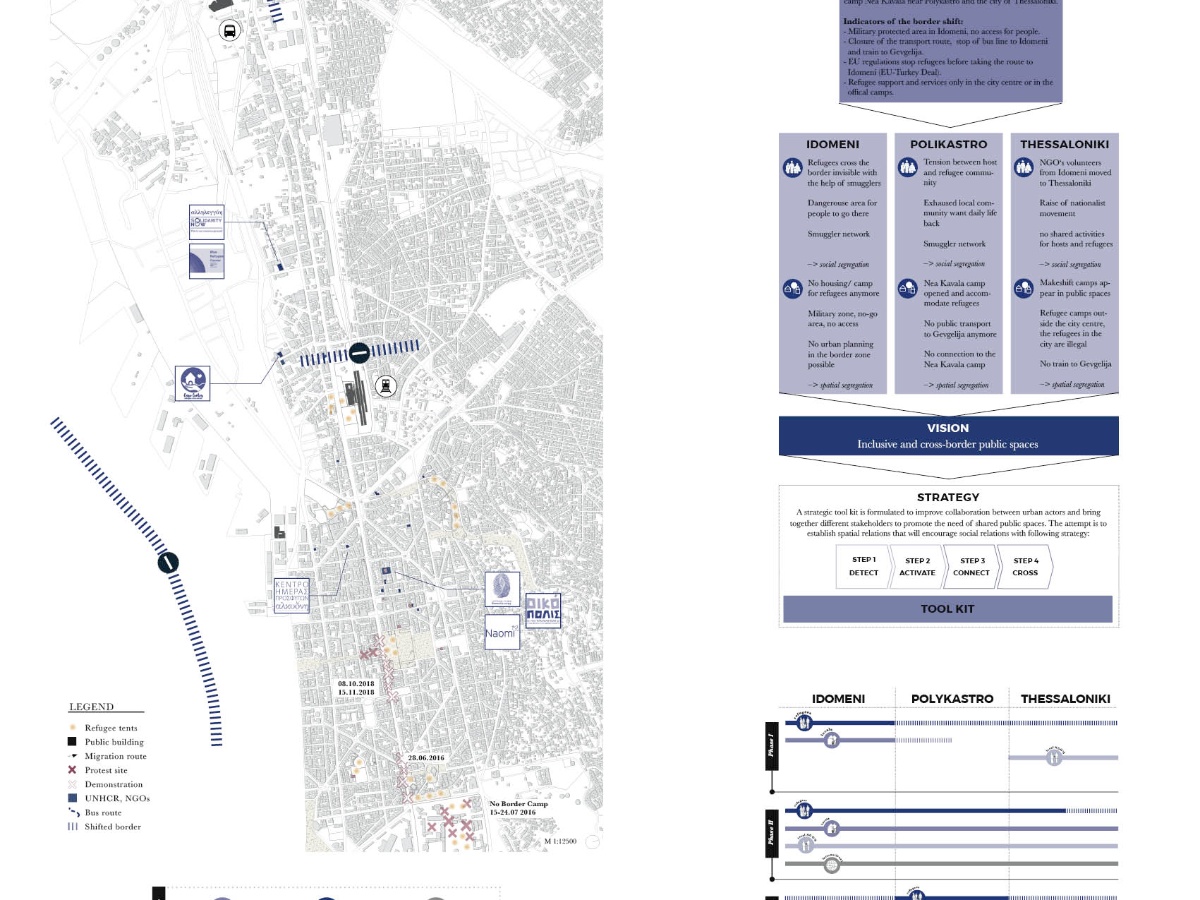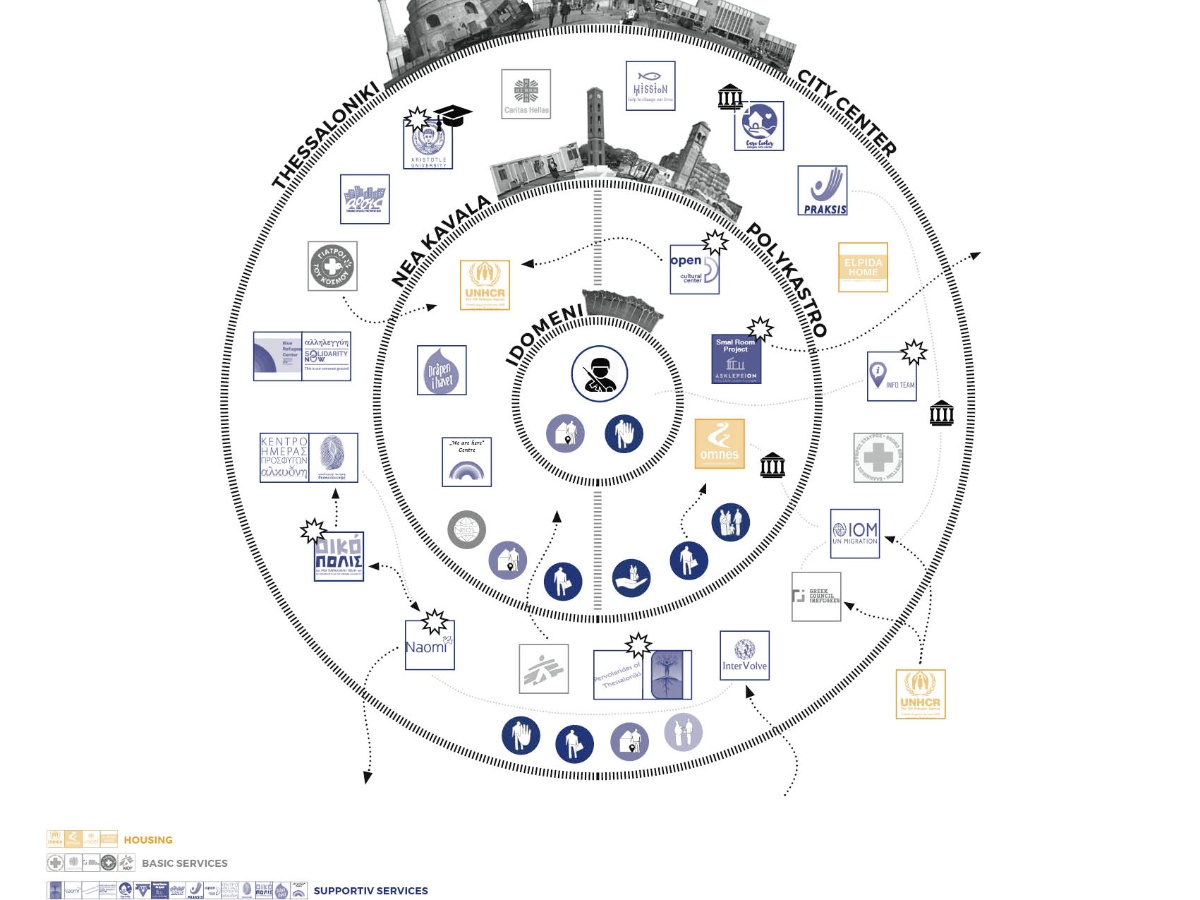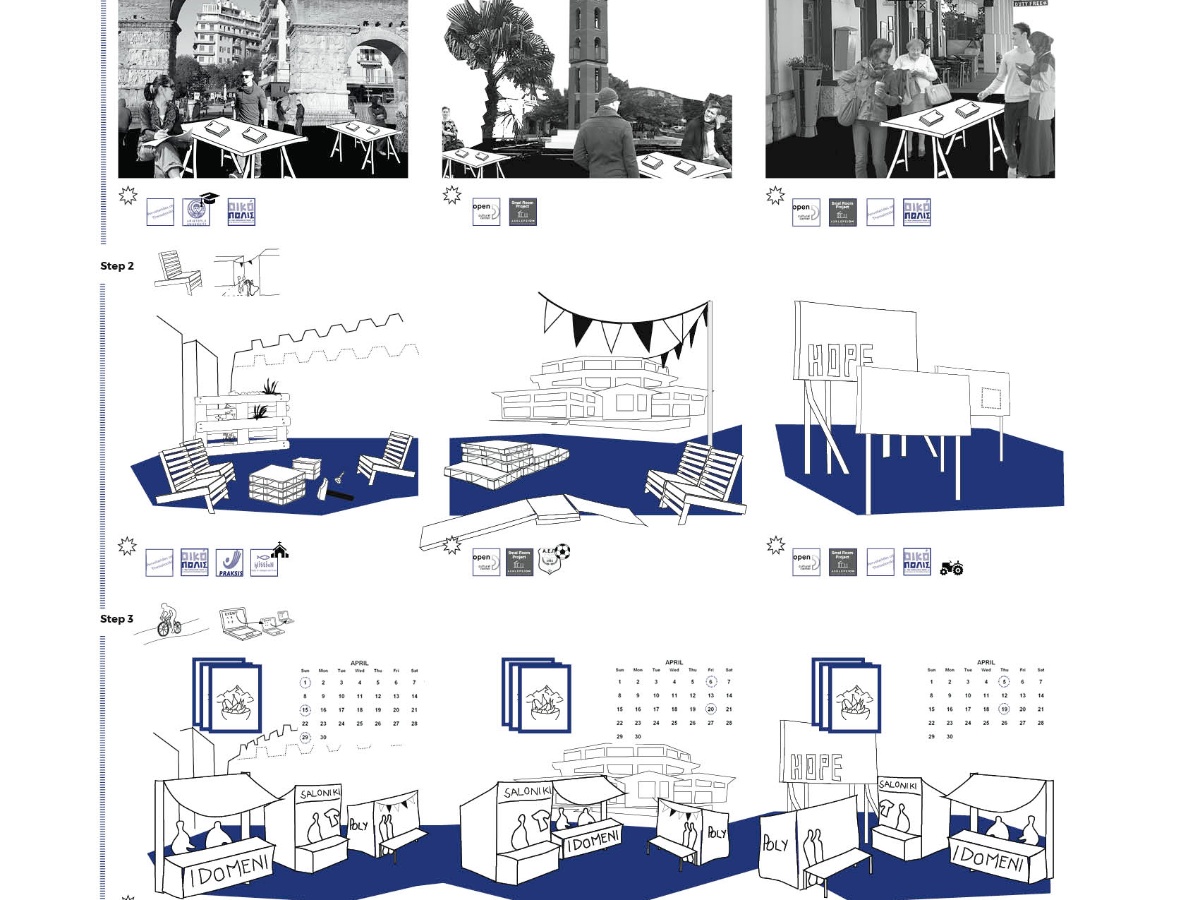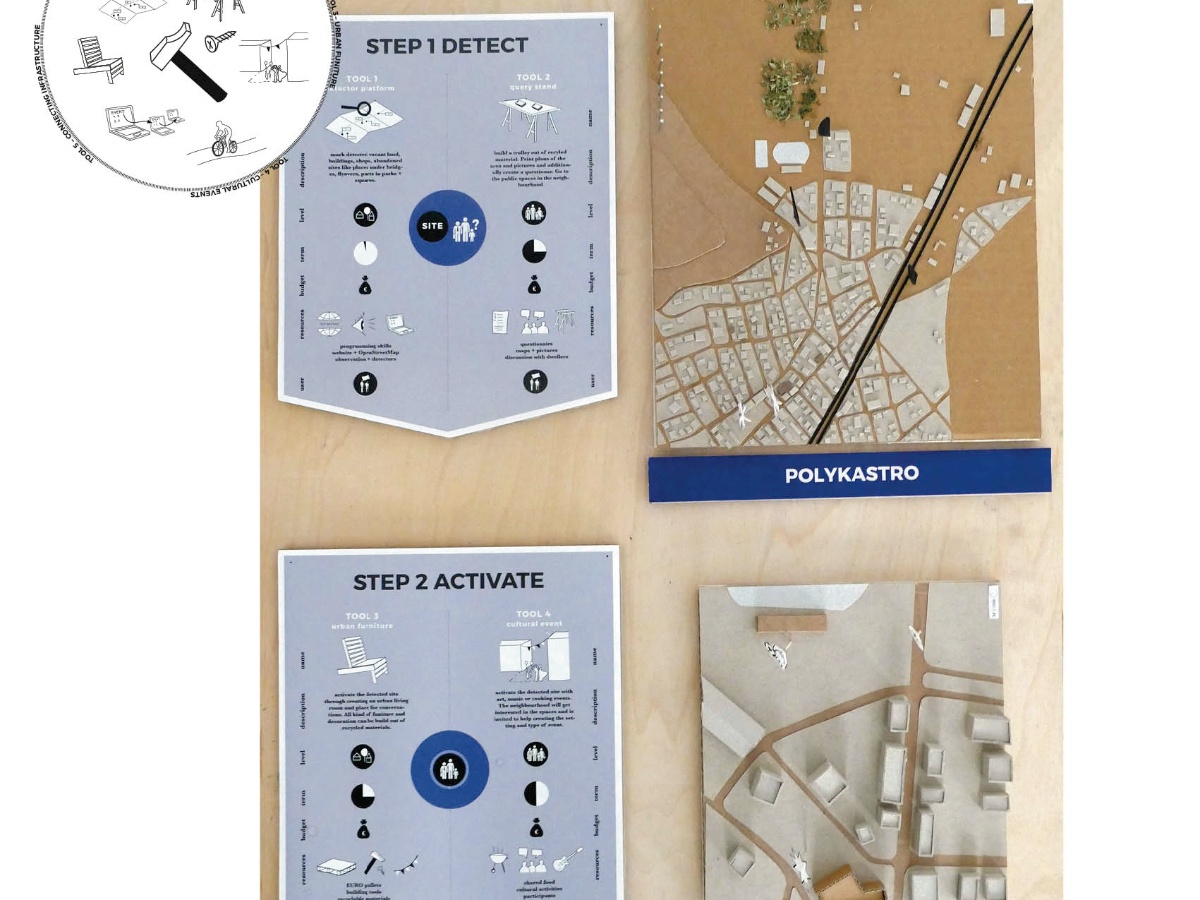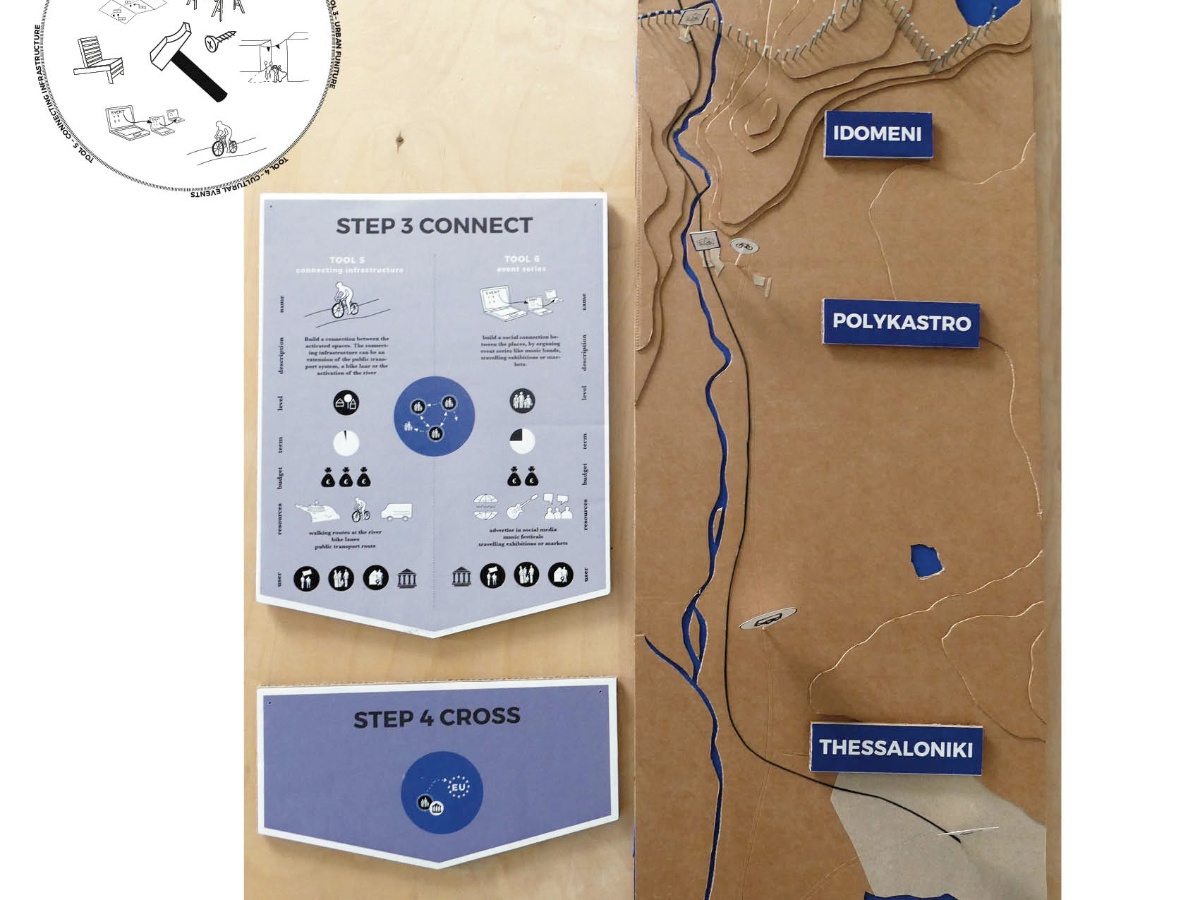Text der Verfasserin
Idomeni, a little Greek border village became world-wide known in the peak of the ‘refugee crisis’ in Europe in late 2015. Thereby Greece has become the transfer country on the journey of refugees to the wealthier north and western European countries. In the course of a domino effect of border closures in Europe, the Republic of North Macedonia constructed a border fence along its political borderline with Greece. As a result of that the refugee route through the Balkans got closed and makeshift camps from Idomeni to Thessaloniki appea- red. Consequently, this research emerged from the interest on the issue of the fortified barrier along the EU borders. Therefore, this study represents a reflection and analysis of the effects of the border fence on the space and communities in three areas: Idomeni, Polykastro and Thessaloniki. From the establishment of a vision of inclusive and cross-border public spaces, the research explores the opportunities and potentials to dissolve the borders. This is achieved by analysing the sequences and consequences of the social and spatial changes since the border closure. In order to analyse social and spatial effects the chosen research approach is a combination of explorative field work and descriptive analysis of contextual factors. Thereup on, after the field research in January 2019 the current situation is illustrated. This research identifies the potential of linking together the threats of the economic crisis and the refugee crisis in Greece to find solutions for inclusive and cross-border public spaces. A strategic tool kit is formulated as a approach to create these spaces and to include the host and refugee community in planning strategies.
Today the border in the Idomeni region in Greece is still closed, the temporary application became a concrete permanent one and the Fortress Europe has solidified. Many refugees in Greece are still hoping that the border will open again and that they can continue their journeys. The recent attempt of hundreds of refugees gathering from the 5th to the 8th of April 2019, near the Diavata refugee camp in the suburban area of Thessaloniki, for the “Caravan of Hope” to march collectively to the border and cross into the Balkans, is reflecting the misery and desperation of the people (BBC,2016). It unveils that Greece is currently not able to provide the needs of refugees. The Greek state has faced several challenges from the financial crisis to the debt crisis followed by the refugee crisis that has placed exceptional burdens on the country. The master thesis points out the unjust consequences within the European Union to put all the burdens on Greece as a terminal country and the EU segregationally planning policies for the refugee accommodation in Northern Greece. It urgently demands a more human solution and most notable an European solution.
Given its location and current political attitudes of the European Union, the Idomeni region will likely continue to receive significant numbers of refugees in the upcoming years. Therefore, questions about the best way to receive these arrivals will remain relevant. The significance of inclusive and accessible social spaces and leisure activities, including those in which refugees can develop and share skills, regardless of intention to leave or remain in the city, should also be kept in mind. Current political regulations and urban limitations cannot be changed, but urban processes can influence future political decisions. This master thesis proposes that the change can start in the public spaces. With the production of inclusive and cross-border public spaces by the refugee and host communities from Idomeni to Thessaloniki a sense of shared culture and beloning can be developed. Overcoming the new shifted borders from Idomeni to Thessaloniki can bring us one step closer to the hope of dissolving the fortified borders.
Laudatio
„Rethinking FortressEurope““ untersucht couragiert und sensibel eines der der virulentesten Themen der Europäischen „Union“, nämlich, dass es weder eine gemeinschaftlich-solidarische Migrationspolitik gibt – d.h. Länder wie Griechenland und Italien werden mit dem Problem alleine gelassen – noch dass in räumlichsozialer Hinsicht der geordnet oder ungeordnet entstehenden Flüchtlingslager ein den geflüchteten Menschen würdiger Umgang gepflegt wird. Die Außengrenzen der „Festung Europa“ entstehen dort, wo einzelne Länder die Grenzen schließen. Die
Arbeit entwickelt in 3 Schritten und 6 Werkzeugen ein „strategic toolkit“, wie die entstehenden Grenzen durch physische und organisatorische Maßnahmen zumindest stellenweise aufgelöst werden können. Die Jury lobt insbesondere den Mut, ein politisch äußerst aufgeladenes Thema mit den Mitteln der Architektur und des Urbanismus zu bearbeiten, dabei die Möglichkeit der Disziplin geschickt nutzt, ohne diese zu überschätzen. Die Arbeit leistet damit einen wertvollen Beitrag zu einer laufenden Diskussion, inwiefern sich unsere Disziplin über ihren Tellerrand hinaus engagieren und zu den räumlichen Implikationen internationaler Politik Stellung beziehen muss. Dazu gehören auch die Mittel der Kommunikation und Vermittlung sowie die Einladung zur Beteiligung über ein ansprechendes Grafik- und Ausstellungsdesign, was dieser Arbeit in besonderer Weise gelingt. Herzliche Gratulation!


